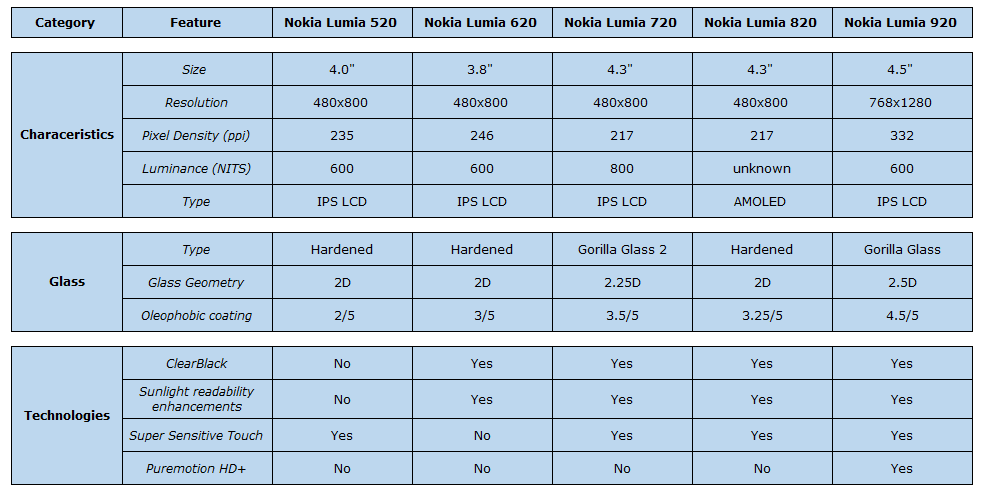So what's the conclusion? Well, for the most part the quality of the screen follows the index number of the Lumia devices. The Nokia Lumia 920 has the best screen, thanks to its 768x1280 resolution and Puremotion HD+ technology. The Nokia Lumia 820 has an AMOLED screen, which gives more vibrant colours, but the Nokia Lumia 720 could be considered slightly superior, thanks to its better viewing angles and curved Gorilla Glass 2 protection.
In theory, the Nokia Lumia 720 has the brightest screen, but in practice all the Lumia devices have their brightness levels limited by the ambient light sensor (i.e. automatic brightness adjustment) in most conditions. All the devices, expect the Lumia 520, are branded as having Nokia's ClearBlack Display technology.
ClearBlack Display is really an amalgam of several different technologies and is primarily related to the way the screen matrix is made up (specifically with a patented combination of circular polarising filters). ClearBlack is described as giving superior outdoors performance and "purer blacks" and it's one of the reasons Nokia is regarded as having some of the best quality screens in the industry (taking into account relative cost and screen resolution).
Despite the common ClearBlack Display branding there are differences between the Lumia devices. For example, the Lumia 720 has a laminated window and display, which means there is no air gap, whereas in the Lumia 620 there are discrete components and there is a small air gap. The absence of an air gap is generally considered a good thing because it reduces the amount of reflection and refraction within the screen matrix (i.e. gives a crisper screen).
The Nokia Lumia 620 has the smallest screen on offer, but it does, overall, have a higher quality screen than the Nokia Lumia 520. The latter may seem a little dim compared to its sister devices, but that's partly due to its poor viewing angles, and it still manages to beat similarly priced devices on other platforms, in part thanks to the inclusion of super sensitive touch, which makes for more flexible touch input.
Here's a table summarising the key specification points covered in the video:

See also
Video: Nokia Lumia 520, 620, 720, 820 and 920 compared
Overdriven pixels - PureMotion technology detailed
